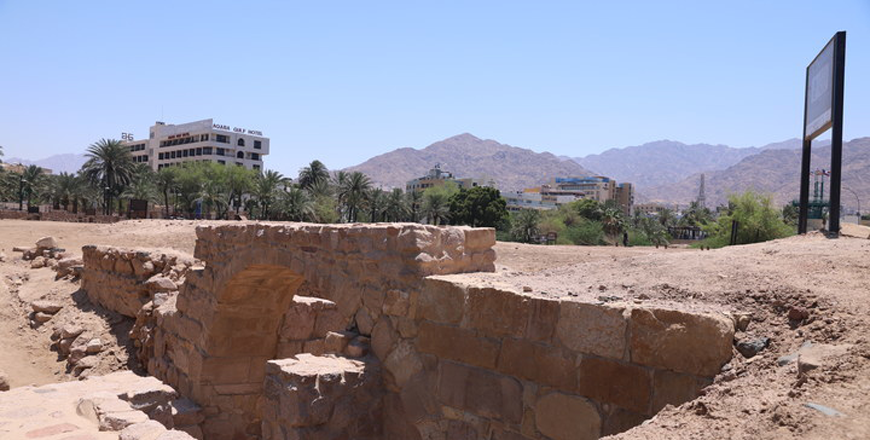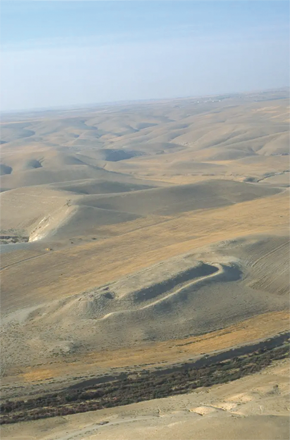You are here
Industrial pottery production in Ancient Jordan: Insights from Nabataean workshops at Az-Zurraba, Ayla
By Saeb Rawashdeh - Mar 16,2025 - Last updated at Mar 16,2025

Ancient Ayla, modern day Aqaba, was one of centres for industrial production of pottery (Photo courtesy of ACOR)
AMMAN — Industrial pottery manufacture was developed in Jordan, southern Levant, Asia Minor, Tunisia and Sardinia. There are different preconditions for a pottery production on an industrial scale-enough clay, dependable water source and fuel.
The operation would be located a distance from residential areas leaving a large footprint of covered and uncovered areas for the different phases of production.
"There may be evidence of clay body preparation including pits for hydrating, mixing, and settling clay. The temper in the clay body would most likely remain the same through time but there would be variability in the clay body due to the unevenness of clay sources over long periods of use," said Marie-Louise Sidoroff.
Sidoroff added that there would be large numbers of wasters in the immediate area of more than one kiln structure surrounded by open spaces for setting out pottery before and after firing.
Standardisation would be observed in vessel metrics, morphology and decoration, although structures may not survive, especially if constructed of perishable materials, an industrial operation requires a protected area to store prepared clay body, to situate potters’ work stations, and to slowly dry great numbers of vessels for a week or more before firing.
“Also, problematical would be uncovering the remains of potter’s wheels completely made of wood, which were typically used in antiquity, with the exception of the heakick wheels when made of fired clay or stone,” Sidoroff said, noting that the presence of markets in the region to absorb large quantities of pottery justifies the presence of an industrial production workshop.
Archaeological signatures of industrial operations are present over long periods of time at two Nabataean pottery workshops in Jordan: az-Zurraba (Petra) and Ayla (Aqaba).
"Az-Zurraba, the longest industrial operation in Jordan, was active from the 1st to at least the 6th century AD with an abundant source of clay at Ayn at-Tinah and a spring nearby. Through Neutron Activation Analysis the clay is proven to be the main pottery production resource for fine Nabataean ceramics."
"Further signatures of an industrial operation in the area are ten kilns," Sidoroff elaborated.
At Ayla, excavations by The Roman Aqaba Project uncovered large quantities of coarse ware pottery dating from its founding in the first century and possibly continuing into the 8th century AD.
Abundant fuel resources are suggested at az-Zurraba, where olive residue in the kiln area was probably obtained from an olive press excavated nearby and more problematic are necessary quantities of fuel at the desert oasis of Ayla where, so far, only small charcoal samples of palm, tamarisk and acacia have been uncovered, Sidoroff elaborated.
"At az-Zurraba five stone walled rooms indicate that potters worked in the same protected location over several centuries. The layout of the rooms suggests that individual potters at az-Zurraba were grouped together to form a tightly clustered industrial complex. So far at Ayla, only one small structure associated with a kiln has been uncovered," Sidoroff explained.
She noted that there is standardisation in clay body, vessel morphology, and decoration in vessels from both industrial sites.
At Ayla a continuity of rim form has been noted over seven centuries and beginning in the 5th AD century a new industry extended through the 7th century AD producing standardised “Ayla amphorae.”
"Ayla potters manufactured ware with a light colour exterior and mica temper and lightly coloured exteriors on amphorae are distinguishing marks of Ayla ware. The evidence from both workshops attests to markets with the capacity to absorb industrial level production, "Sidoroff underscored.
She added that the abundance of fine ware at Nabataean and commerce with the wider Mediterranean world played a role in distribution of Nabataean pottery and quantities of Ayla amphorae are found within the site and along the Red Sea littoral.
Related Articles
AMMAN — Mughur Sabik and Mudayna Thamad are located in the close proximity, just a few kilometres from each other.
AMMAN — The emergence of the Nabataeans from Hijaz to modern day Jordan was gradual and their economic and political rise happened in 2nd ce
AMMAN — Khirbet Al Lehun is located in the central Jordanian massive, north of Wadi Mujib.


















